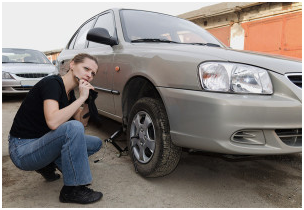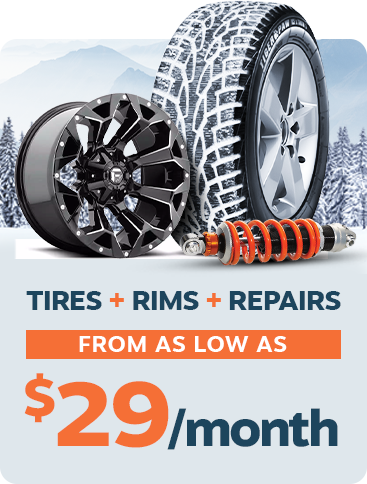Taking Care of Your Tires

Taking Care of Your Tires – Your Car’s Most Valuable Safety Feature
When it comes to maintaining your car, the mechanical components under the hood usually take priority. Most people make a conscious effort to keep up with their oil changes, but it’s important to not overlook another very important element of your vehicle – your tires. Your ability to control your vehicle depends on the traction between your tires and the road. Properly maintained tires are essential for your safety, fuel efficiency, and your car’s optimum performance.
Unlike many other areas in North America, vehicles in Southern Ontario are exposed to a wide range of elements. Our tires are in constant contact with hot pavement in the summertime, and drive us through freezing cold winters, complete with icy roads covered with harsh chemicals. It’s no wonder that our tires start looking worn out after just a few years on the road. To ensure optimum performance and safety, tires must be properly inflated, rotated on a regular basis, and replaced when they reach the end of their recommended lifespan.
Correct tire pressure varies by vehicle. You can refer to your owner’s manual for the specific tire pressure that is recommended for your car. Tires usually lose about a pound per square inch each month, so it’s wise to check the pressure often. You can’t always tell by simply looking at the tire if it is over or under inflated.
What happens if a tire doesn’t have enough air? An under-inflated tire will wear down the tread much quicker. It will reduce steering responsiveness and can have a negative effect on your car’s handling. On the flip side, over-inflated tires are more susceptible to damage from rough surfaces or potholes. They generally create more road noise and have less contact with the road’s surface.
Ever notice that your car starts to hum while you are driving on a smooth road? This could mean that you are due for a tire rotation. Car manufacturers recommend that you rotate your tires every 10,000 to 15,000km. Your car’s weight distribution, brakes, and accidental curb contact all play a role in wearing down your tires. Rotating your tires will improve your traction, allow the tread to wear down more evenly, and help you get a longer lifespan out of your tires.
Once your tires reach the end of their lifespan, it’s time to replace them. The simple test that many people use is inserting a penny between the treads on various places around the tire. Place the Queen’s head facing toward the tire. If you can see the top of her head, your tread is worn out and you are probably due for new tires. Even though a set new set of tires are a significant investment, remember that they are your first line of defence against inclement weather, poor road conditions and are essential for your safety on the road.



